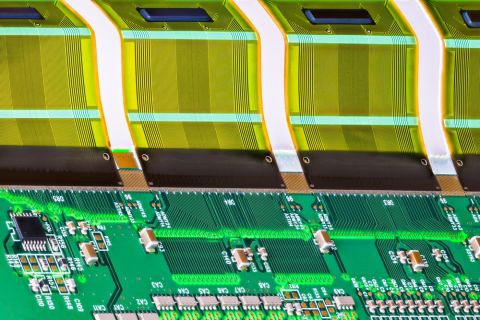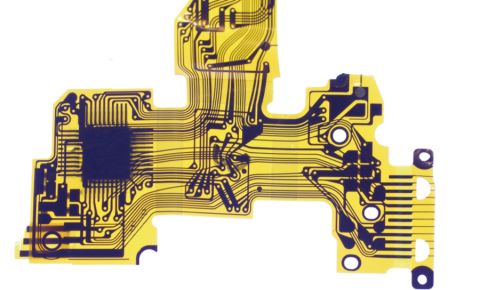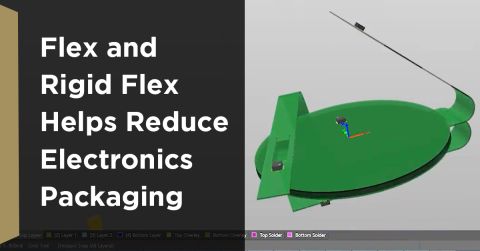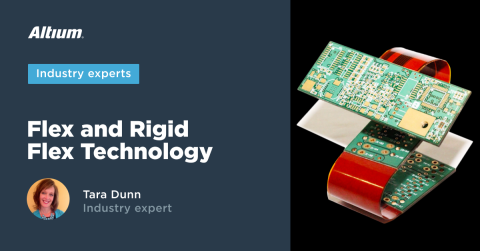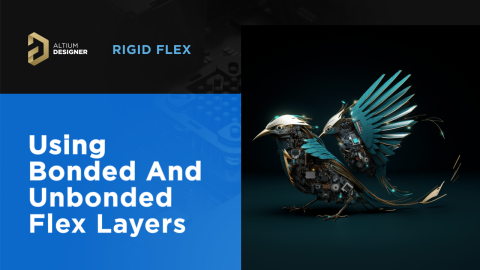Reducing Assembly Costs with Flexible Circuits

In the continuously evolving world of electronics manufacturing, the pursuit of efficiency and cost-effectiveness remains a constant. With each advancement in technology comes an opportunity to optimize assembly processes and drive down costs. One interesting illustration of this is the adaptation of flexible circuits over traditional wire and cable systems. Intuitively, one may first think that moving to a specialized technology such as a flexible circuit technology, would increase costs, particularly if only looking through the lens of pricing for wire harness components compared to a flexible circuit. In this blog, we will look at several ways that incorporating flexible circuits can not only reduce overall assembly cost, but also bring additional benefits.
Understanding Flexible Circuits
At its most basic definition, a flexible circuit is an array of conductors sandwiched between layers of thin dielectric film with the ability to bend, fold or flex without damaging conductors. Flexible circuits can be single sided, double sided and multilayer, each tailored to a specific application.
As promised, we are going to do a deeper dive into decreased assembly time and decreased cost. To truly appreciate the cost-saving potential of flexible circuits, let’s look at the various ways in which they contribute to overall cost reduction:
Material Costs
- Raw material costs: flex circuits inherently necessitate fewer materials compared to their traditional wiring counterparts, thanks to their compact footprint and streamlined design.
- Reduced need for additional components: By integrating functions such as connectors and insulators directly onto the flexible substrate, flex circuits eliminate the requirement for separate parts, reducing material expenditure.
- It is important to also point out that both of the bullet points above also lead to indirect cost savings such as purchase order creation, incoming inspection, kitting, etc.
Labor Costs
- Streamlined assembly process: Flex circuits bring a shift in assembly methodology, significantly reducing the number of individual components to be handled and connected, thereby translating into substantial time and labor savings.
- Expedited installation: With the use of plug-and-play connectors, flex circuits facilitate swift and hassle-free installation, eliminating the labor-intensive task of soldering individual wires, further driving down labor costs.
- Less rework and defects: The streamlining of the assembly process with a flexible circuit leads to fewer errors and defects during production resulting in lower rework costs and higher yield.
Design Iterations and Prototyping
- Accelerated prototyping: Flex circuits lend themselves to rapid prototyping and iterative design processes, giving manufacturers the ability to more swiftly iterate and refine designs, ultimately expediting time-to-market and mitigating associated development costs.
- Reduced shipping costs: The lightweight nature of a flexible circuit when compared to a wire and cable harness has a direct impact on shipping and transportation costs.
Maintenance and Repair
- Enhanced durability: The robust construction of flex circuits means they are more resistant to wear and tear, requiring fewer maintenance interventions and reducing repair costs over the product lifecycle.
Additional benefits: Beyond their cost-saving prowess, flexible circuits offer a number of additional benefits that help explain the continued growth in demand for flexible circuits, this growth far surpassing the percentage growth in demand rigid printed circuit boards.
- Weight and space savings: Owing to their lightweight construction and compact form factor, flex circuits enable significant reductions in both weight and space requirements, at times up to 60%, making them an ideal choice for applications where size and weight constraints are paramount.
- Flexibility: As the name implies, flexible materials allow for reliable applications for products that require tight bending and folding areas and applications that are required to flex millions of cycles.
- Enhanced reliability: The absence of wire connections minimizes the risk of mechanical failure and electrical shorts, culminating in improved product reliability and longevity. With a flex circuit design, the design is now controlled by an artwork, giving less opportunity to operator error.
- Superior electrical performance: Flex circuits boast exceptional signal integrity and impedance control, ensuring robust electrical performance even in the most demanding operational environments.
- Heat dissipation: Polyimide is an excellent conductor of heat compared to other circuit board materials.
- Environmental considerations: With a growing emphasis on sustainability, flex circuits emerge as a good example of eco-friendliness, often leveraging recyclable materials and curbing electronic waste compared to their traditional wiring counterparts.
Shifting from a wire and cable approach to a flexible circuit approach ultimate requires a strategic effort that integrates creativity, effective communication and cross-functional collaboration. The overall costs are not bests evaluated in a silo but rather throughout the assembly supply chain. Cost savings and labor reduction are just one aspect to evaluating flexible circuit benefits and as you venture into the world of flexible circuit design, work closely with your fabricator to shorten the learning curve. There are many aspects of flexible circuit design that mimic rigid board design, but there are just enough idiosyncrasies that consulting with your fabricator and learning from their experience will significantly shorten the design process and prototype iterations.
